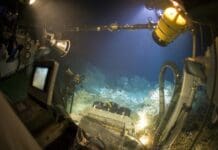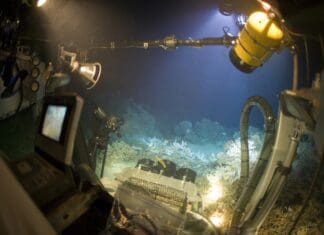This post is also available in:
 עברית (Hebrew)
עברית (Hebrew)
A leap forward in coastal defense capabilities has been made with the deployment of a cutting-edge weapon system designed to sink enemy ships from the shore. The recently introduced Navy-Marine Expeditionary Ship Interdiction System (NMESIS) promises to dramatically enhance the ability to deny enemy access to key maritime zones.
Unveiled during a ceremony in Hawaii, the NMESIS is a powerful new addition to the arsenal of the 3rd Marine Littoral Regiment (3d MLR). This advanced ground-based missile launcher integrates two Naval Strike Missiles (NSMs) mounted on a Joint Light Tactical Vehicle (JLTV), capable of striking targets up to 185 km away. The weapon system, which combines state-of-the-art targeting technology with precision strikes, is a game-changer for the U.S. military’s coastal defense strategy.
The 3d MLR, already specializing in amphibious and coastal warfare, will operate the NMESIS in collaboration with its Medium-Range Missile Battery. This unit will be a key player in conducting anti-ship operations across the Indo-Pacific, a region known for its strategic maritime significance. With its ability to launch powerful strikes against enemy vessels at or near the waterline, the NMESIS offers unparalleled capabilities in sea denial.
The system’s integration into broader naval operations is expected to increase coordination with both the Marine Air-Ground Task Force and allied forces, strengthening regional security. Its advanced features, including GPS and infrared guidance, allow the missiles to detect and engage targets with unmatched accuracy, even in complex, dynamic environments.
While it’s still early in its deployment, the introduction of the NMESIS marks a significant milestone for the 3d MLR, enhancing its mission to deter adversaries and maintain peace through technological superiority. Systems like the NMESIS will be crucial in defending vital coastal areas and asserting control over key maritime routes.


























